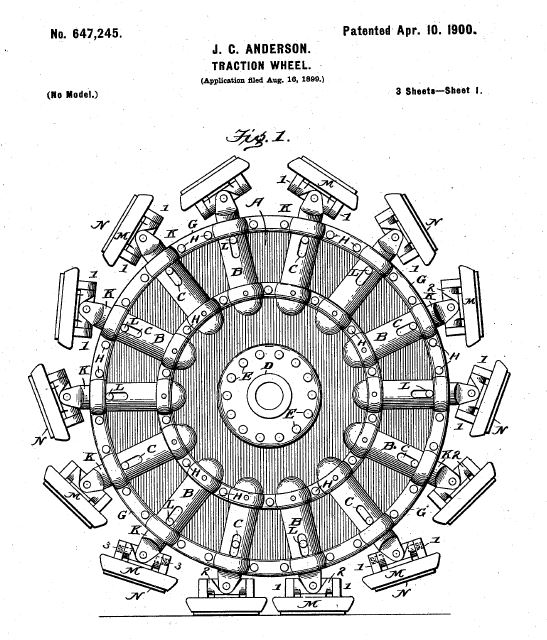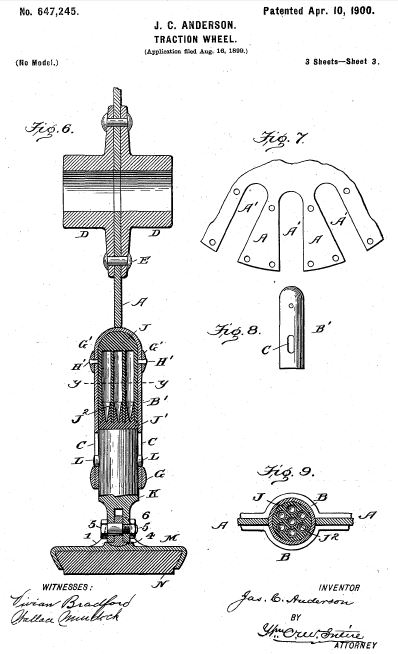1899 – Walking Wheel patent by James C. Anderson
Publication number US647245 A
Publication type Grant
Publication date Apr 10, 1900
Filing date Aug 16, 1899
Priority date Aug 16, 1899
Inventors James C Anderson
Original Assignee James C Anderson
My invention relates to certain new and useful improvements in wheels for use upon vehicles propelled on roadways by mechanical power, and particularly to that class known as "autotrucks," which are designed for carrying heavy loads.
In the use of wheels upon vehicles propelled by animal motive force it is well understood that the area of traction is the tangential contact between the periphery of the tire multiplied by its width, and the tangential contact is governed entirely by the physical character of the material of which the tire is composed. This contact is of course lessened when the profile or inequalities of the roadbed transverse to the path of the wheel are such that only a portion of the width ot the tire comes in contact with the road.
In a vehicle drawn by animal motive force the traction area of the wheel is of comparatively little moment, because the anatomical movements of the animal compensate for the small degree of traction in the vehicle. In other words, in such cases the wheel constitutes a lever to which the physical power of the draft-animal is applied, and nature, recognizing these conditions, has so constructed the hoofs of draft-animals that in contact with a road way a comparatively-large area of traction is secured. For instance, this traction area with the hoof of an ordinary horse is about thirty square inches, while in a tire, say, two inches wide and composed of resilient material, such as rubber, and assuming that the tire flattens to half an inch, the total area of traction would be but one inch. The articulative joints also of the legs of the animal are such that the hoofs accommodate themselves to the uneven surface of the road to maintain the necessary area of contact, and such contact is preserved in the case of each hoof until the animal has moved forward a distance equal to one step or stride, and hence the push on the traction area is maintained to a similar extent, and thus it is that with this large amount of traction and the toggle action of the legs of a horse he is enabled to draw a heavy load. It has been the recognition of this principle in the application of the physical force of an animal that in the coustruction of autotruck-wheels they have been devised with excessively wide and resilient tires in order to secure as much traction as possible; but the limit in the width of tires of this kind is such, owing to their weight and cost, that a sufficient amount of traction cannot be secured for the best results.
Each leg had a pneumatic piston acting as a damper over bumps and irregular ground.
See other early Walking Wheels and Walking Machines here.

